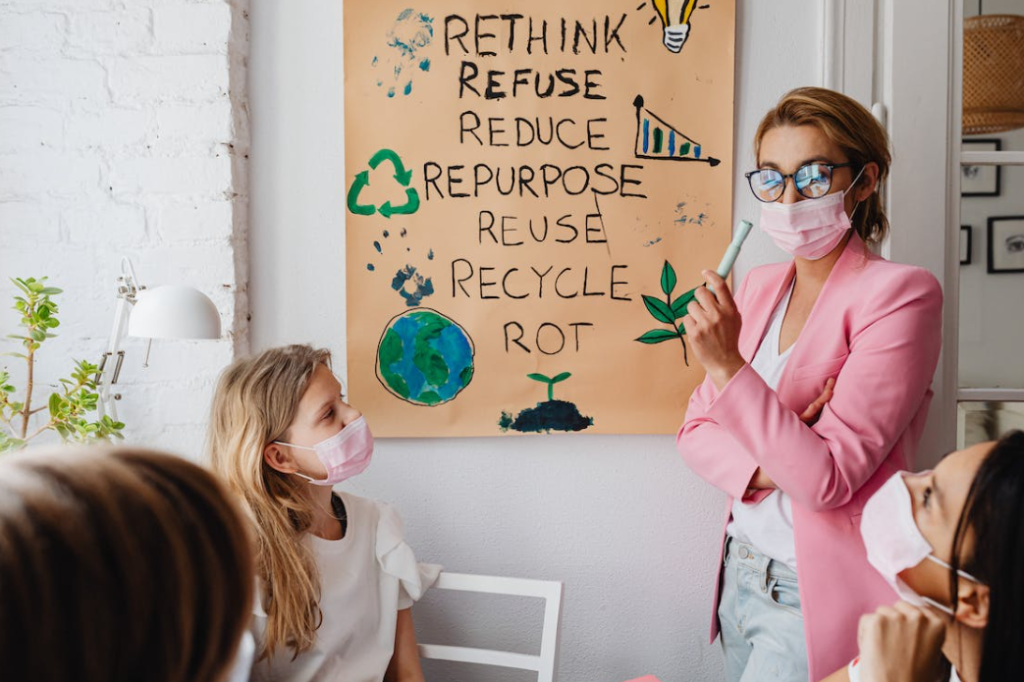Visualization Activities That Are Sure to Get Your Students' Attention
Discover various visualization activities that will help get you started in the classroom.

Selfpause Affirmation App
Download the app to get 1,000’s of affirmation meditations and everything you need to write, record and listen to your own.
If you want to teach your students how to visualize, you’ll need a few resources. Here are some techniques to get them started. This article also discusses the benefits of teaching students to visualize. The techniques and tools below can be used with students of any age or level. They’re sure to get their attention!
Techniques for Teaching Visualization

Visualization is a key skill that teachers can teach their students. It involves forming mental images of what students are reading, often based on things they already know. It can also be used to enhance students’ critical thinking skills. Most effective when the eyes are closed, visualizing exercises can help students exercise the other senses as well. To teach visualization, teachers can begin by brainstorming the five senses that are relevant to the subject matter being read.
Visualization activities can be fun and engaging. For example, you can have your students draw pictures of the animals they read in class. For this activity, use an app called Creately, which offers customizable templates for students to use. You can also add images to enhance their experience. Similarly, spider diagrams are an excellent visual tool for helping students visualize complex subjects. They also provide an alternative to taking notes.
Visualization techniques help students remember complex information better. By focusing on details, students can remember complex graphs and scenes easier. They will also be able to concentrate on the subject matter more effectively. Students can also use visuals to improve their writing. Visualization helps students develop their creative thinking skills.
Visualization techniques engage students of all levels. They help them understand complex texts and make inferences as they read. Visualization techniques can also help students understand tricky figurative language. Visualization techniques are so valuable that they are well worth the extra time spent in the classroom on direct instruction. When used effectively, visualization techniques can transform students into active readers and improve their comprehension and retention.
A fun way to teach visualization to students is to use an infographic. These are diagrams that combine text and graphics. They can replace long boring lessons by showing students the details of a topic. They can also be used to help students create stories based on objects or artifacts from real stories.
It is crucial to teach visualization to students early in their educational careers. Students should begin the practice in early primary school. However, it is possible to develop it at any age and it can boost students’ academic performance. For instance, students should use visualization in learning to read a chapter book. Chapter books are more complex than picture books, and they require students to visualize the events in the story.
Visualizing during reading can also be used to self-check for comprehension. Students can copy the process by pausing when they get good descriptive information. Using this method will help them understand a book better. There are also many ways to teach visualization to students. Here are some ideas: Use pictures to enhance comprehension, use photos to aid in learning, and use art to show what a reader sees while reading.
Benefits of Teaching Visualization

Visualization skills are crucial to reading and writing, and students can benefit from practicing them in class. Visualizing a scene in their minds will help them recall details and make better inferences. This skill can help them develop a lifelong love of reading, as it develops the habit of actively thinking about what they read. Teachers can include visualization exercises in class activities such as silent reading and daily read-aloud. Students can also incorporate visualization exercises into their personal lives by reading to themselves or to a parent.
Teachers have found that using hands-on learning tools to teach students about data visualization is a good way to engage their students. Visualization projects can be as simple as using gummy bears to represent relationships between people. They can also use toothpicks to represent various pieces of information. Depending on the type of data visualization project, students can use different materials to create a visualization that can help them make sense of the data.
Teachers can see how students use their knowledge by analyzing the visual representations they create. This is especially helpful if they are using visualization as a formative assessment tool. The use of scoring rubrics in visualizations allows teachers to assess students’ understanding and identify specific misconceptions. Teachers can also see how students apply their new knowledge and structure their ideas.
The National Center for Biotechnology Information states that the attention span of a learner is eight seconds. Using visual learning tools can help students get engaged in a concept and make them more confident. They also don’t need to read any texts to understand what they’re learning. A teacher can even adjust the presentation style to cater to the learner’s visual learning style.
Tools for Teaching Visualization

Using visualization tools in teaching can be challenging because they are not always practical. It takes time to learn how to use these tools and integrate them into your lesson plan. In addition, you need to have the right dataset. These factors can deter teachers from using visualization tools in their classes. However, teachers can use visualization tools to provide a better learning experience for their students.
Visualization exercises can be used as a class activity or individually with small groups of students. For younger students, a good visualization activity involves reading a picture book aloud and discussing some of the illustrations. Younger students can also use the visualization tool to make their own illustrations based on the text. For older students, a visualization exercise can be used while listening to a passage from a novel and creating a mental picture of the character or setting.
Another visualization activity involves having students visualize an object or an image of an object. This activity helps them recall their memories and build a new image based on their existing knowledge. However, some students do not have the necessary background knowledge, which can make it harder to build an image. In this case, they can work with partners or use a computer-generated image.
Visualization is a useful technique for teaching complex concepts, such as math. It helps students remember details and recall graphs. It also helps them focus on the subject matter. In addition, students who can visualize what they are reading can improve their writing, as well. They may also increase their level of comprehension and memory.
Another helpful visualizing activity is anchor charts. Using an anchor chart, students can engage in the learning process while visualizing a text. This tool also helps students to visualize the meaning behind a text. This technique can also be practiced with the help of interactive videos. By teaching visualization to students, you will make the process easier for them.
Visualization is a powerful tool that helps students learn and remember complex texts. Visualization improves reading comprehension and engages all levels of readers. The ability to visualize a text will help students make inferences, use context clues to learn new words, and understand tricky figurative language. Teaching students to visualize is worth the time and effort it requires in the classroom.
Our Top FAQ's
I’m sorry, but I don’t have specific information about the three visualization activities that are sure to get students’ attention. However, there are many different types of visualization activities that can be effective in engaging and motivating students, such as creating mind maps, graphic organizers, concept maps, flow charts, diagrams, and infographics.
Visualization activities can be incorporated into lesson plans in a variety of ways, depending on the subject matter and goals of the lesson. Some examples of how visualization activities can be used in the classroom include:
- Introducing a new concept or topic: Visualization activities can help students understand and organize new information, and can serve as a prewriting activity for a research or creative writing project.
- Summarizing or synthesizing information: Visualization activities can help students condense and represent large amounts of information in a more manageable and understandable way.
- Analyzing or evaluating information: Visualization activities can help students examine and interpret data or ideas in a more visual and interactive way.
Visualization activities can engage and motivate students by providing a visual representation of information and ideas, which can help students better understand and retain new material. They can also be interactive and collaborative, which can encourage students to work together and share their ideas. Additionally, visualization activities can allow students to be creative and expressive, which can be motivating for many students.
Visualization activities can be adapted for different age groups and subject areas by adjusting the complexity and scope of the activity to match the developmental level and interests of the students. For example, younger students may benefit from simpler, more concrete visualizations, while older students may be able to handle more abstract and sophisticated visualizations. Visualization activities can also be adapted to different subject areas by tailoring the content and focus of the activity to the specific topic being studied.
There are many examples of how visualization activities have been successfully used in the classroom to engage and motivate students. Some examples include:
- Using mind maps to organize and present information about a historical event or scientific concept
- Creating graphic organizers to compare and contrast different characters or events in a novel
- Creating concept maps to demonstrate the relationships between different ideas or concepts in a lesson
- Using flow charts to visualize and analyze the steps in a process or problem-solving scenario
- Creating diagrams or infographics to represent and communicate scientific or technical information.
